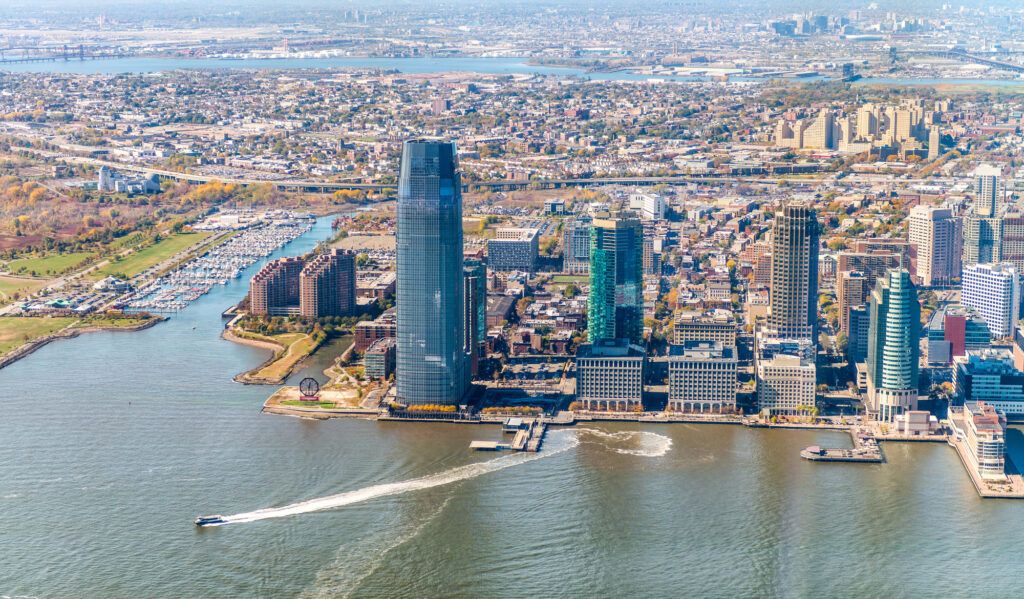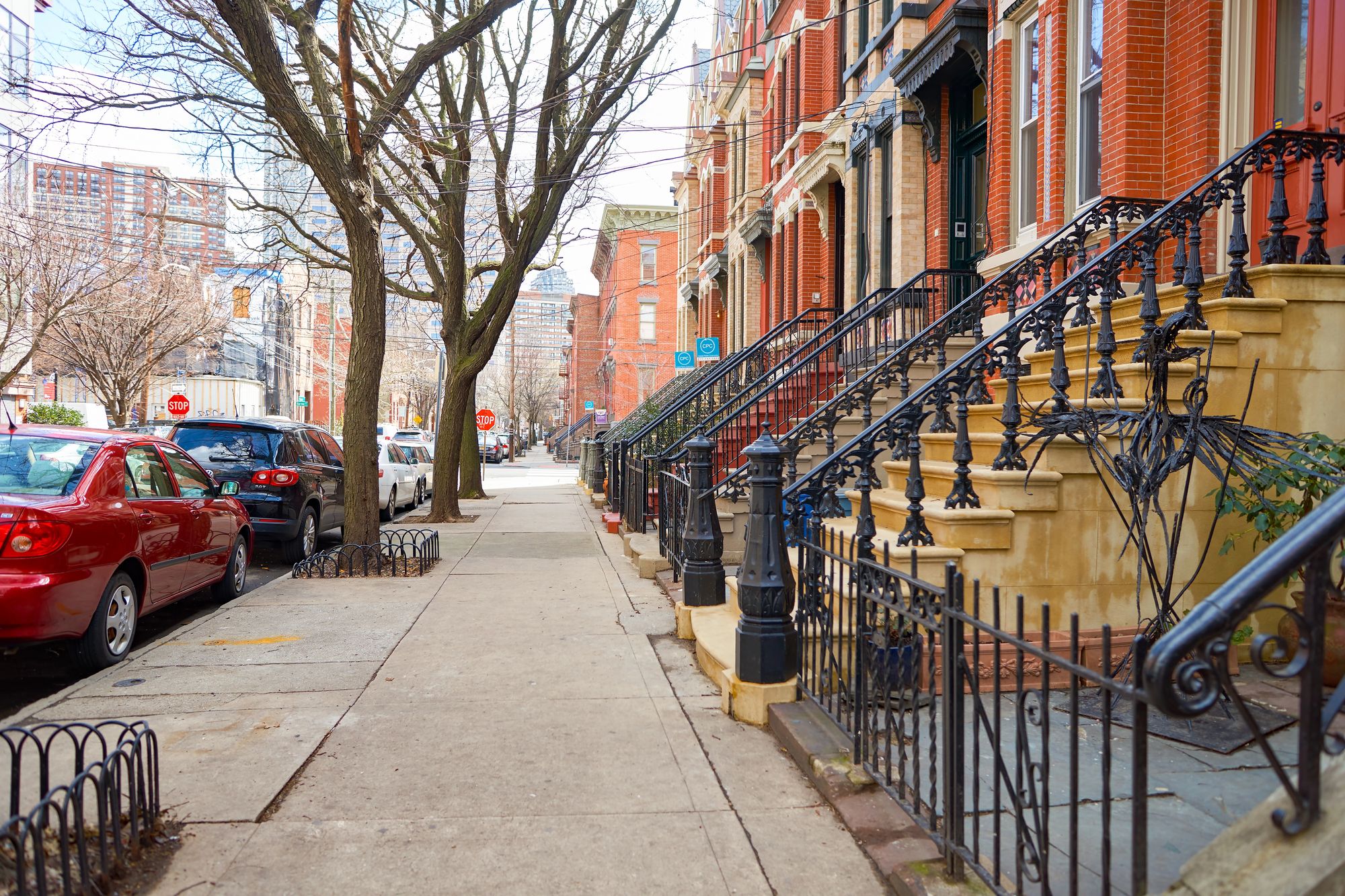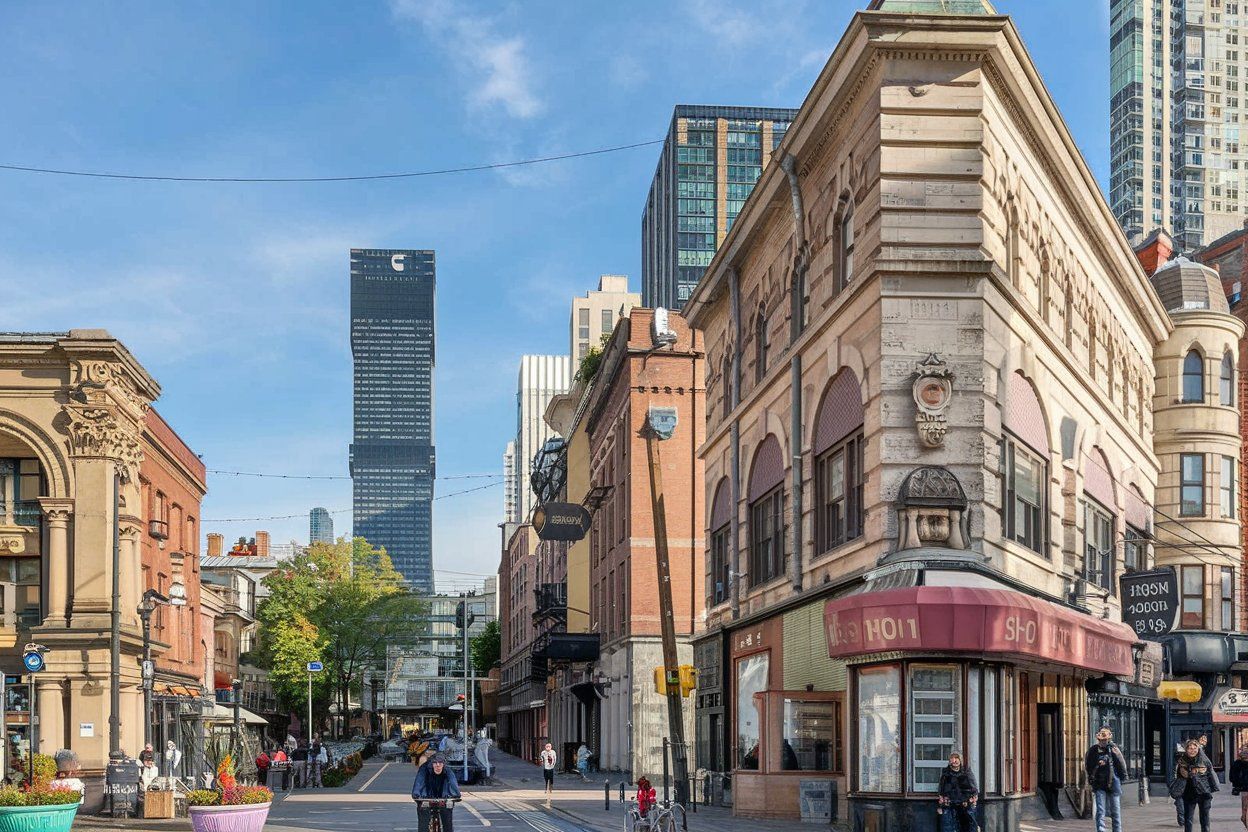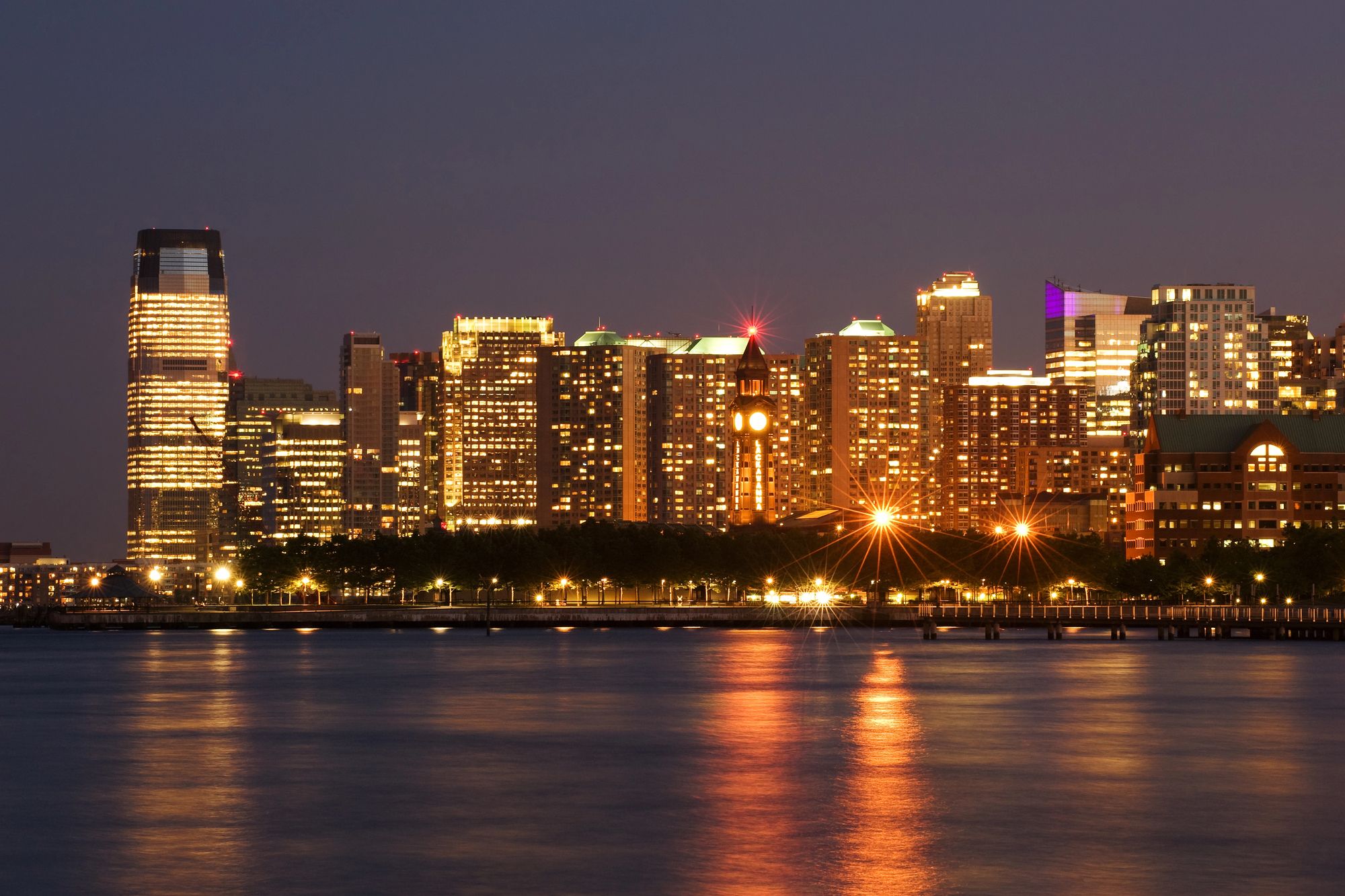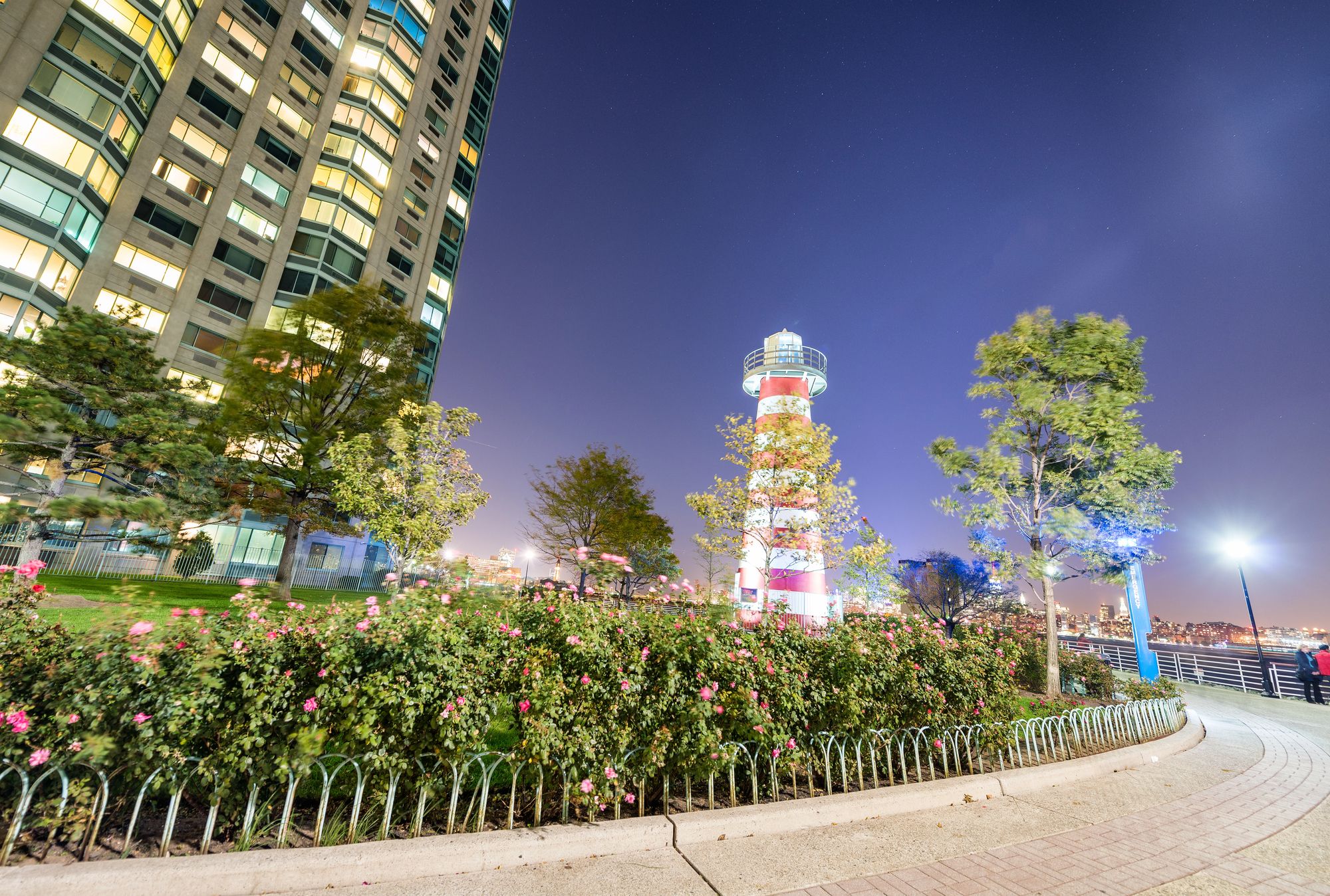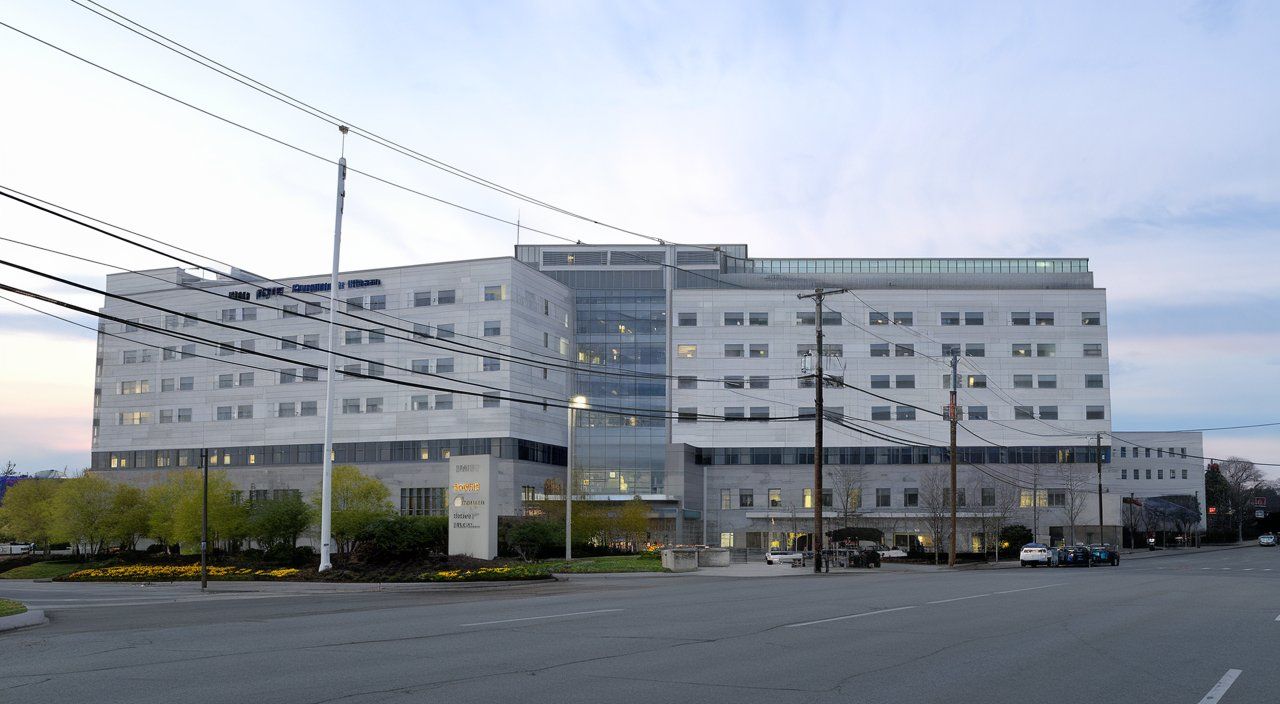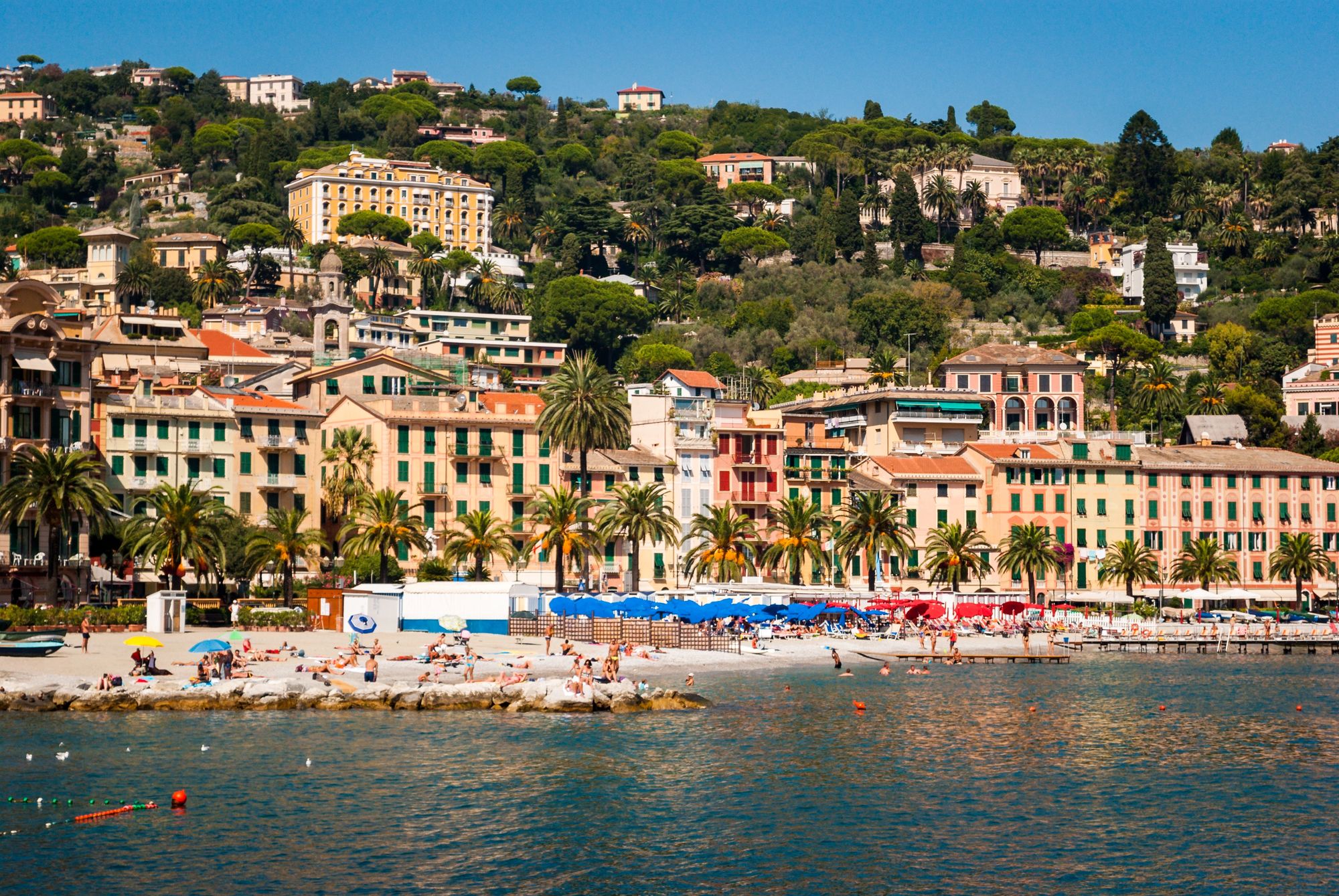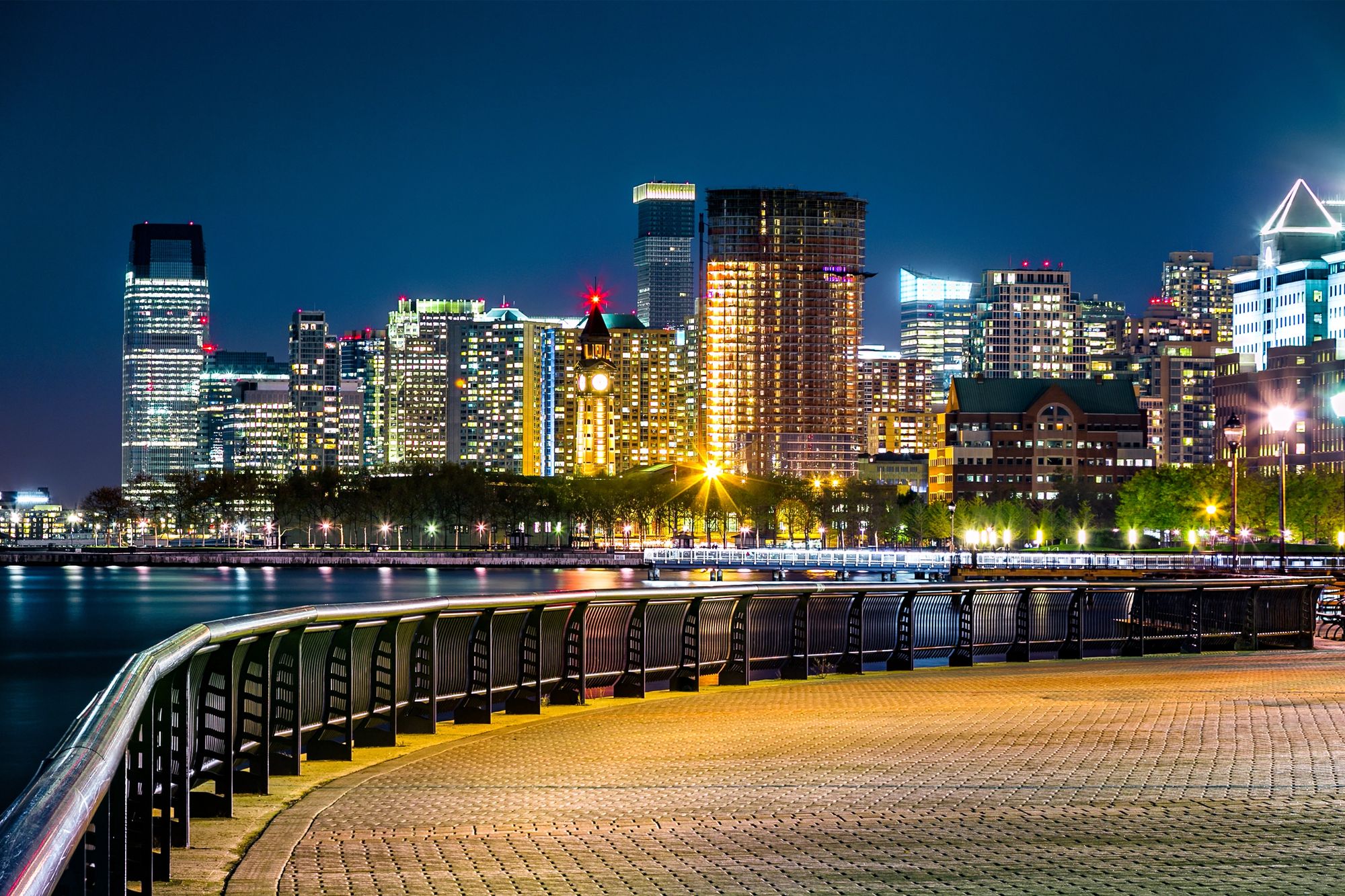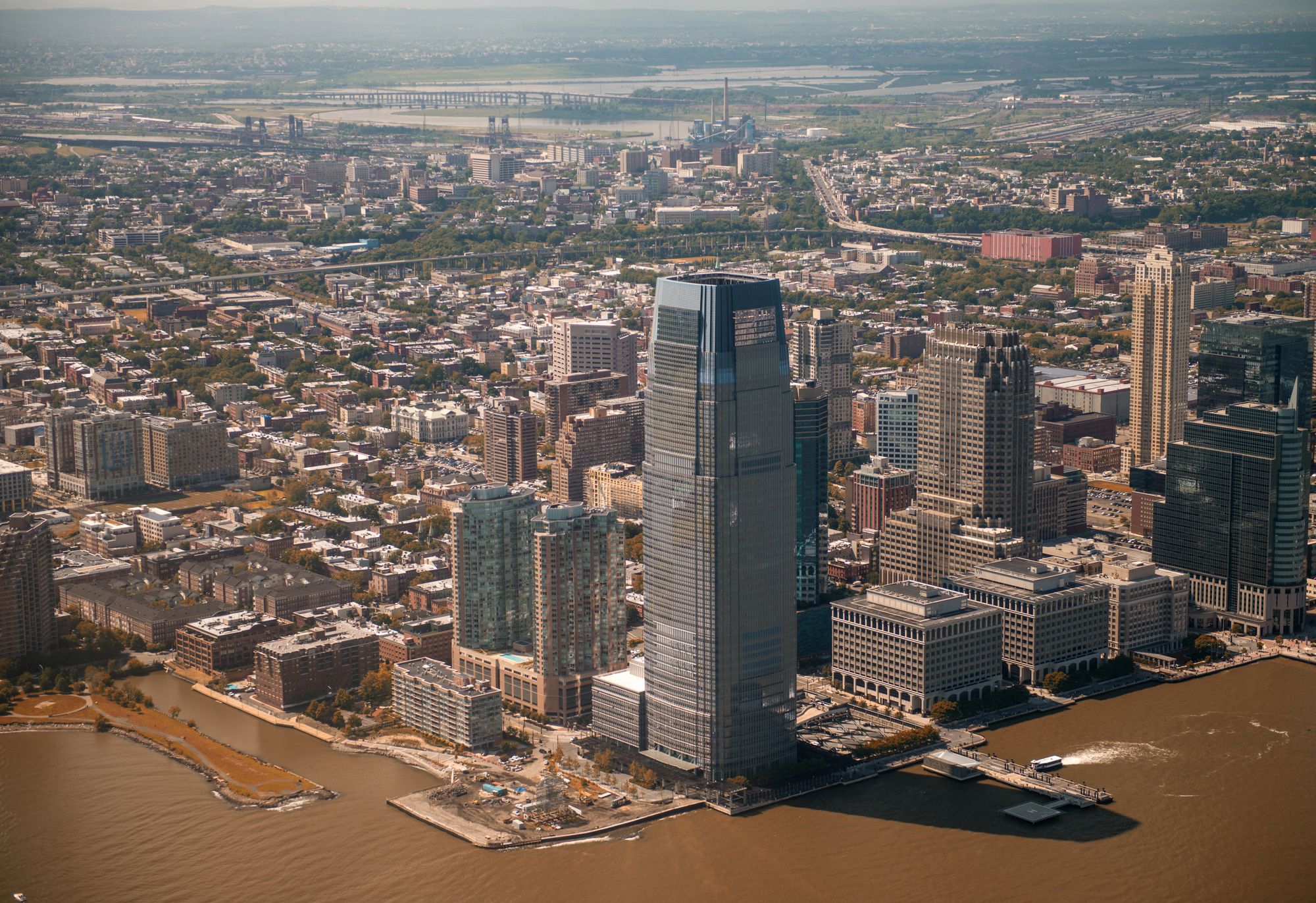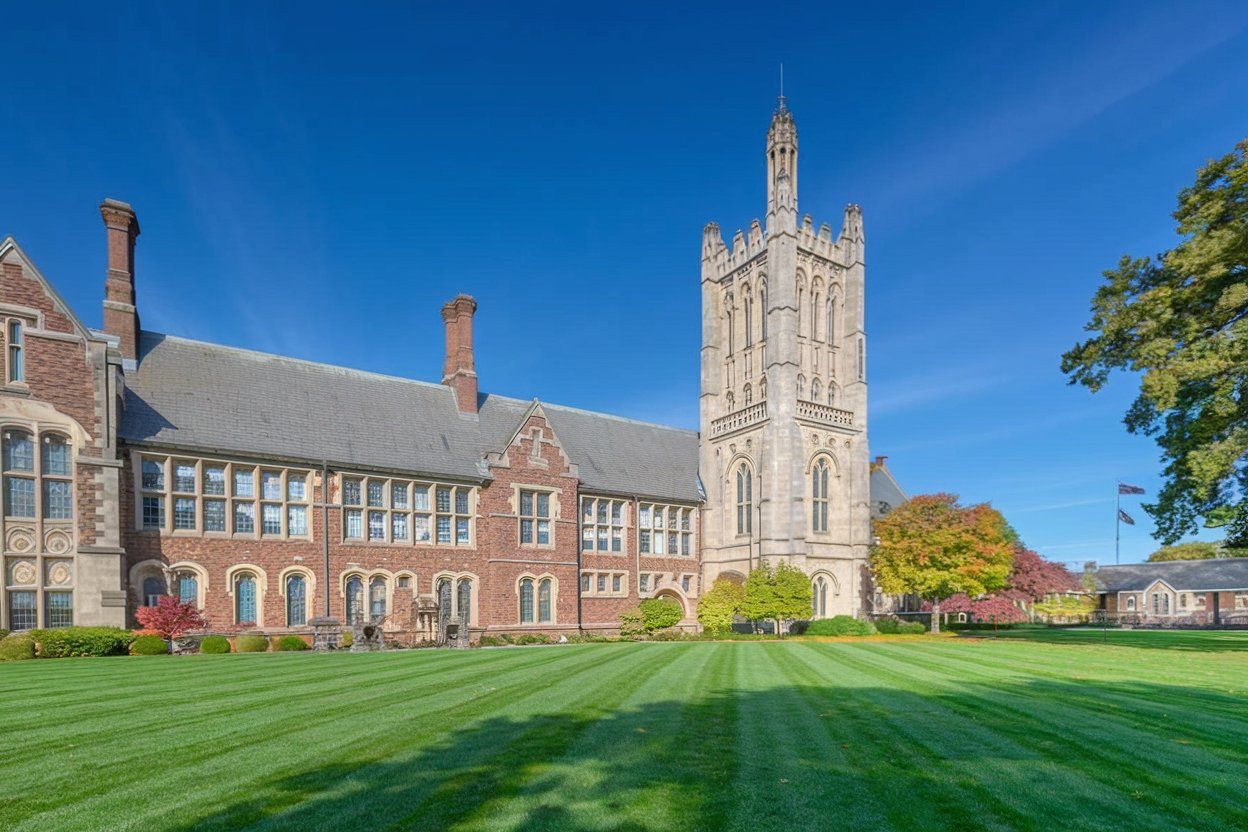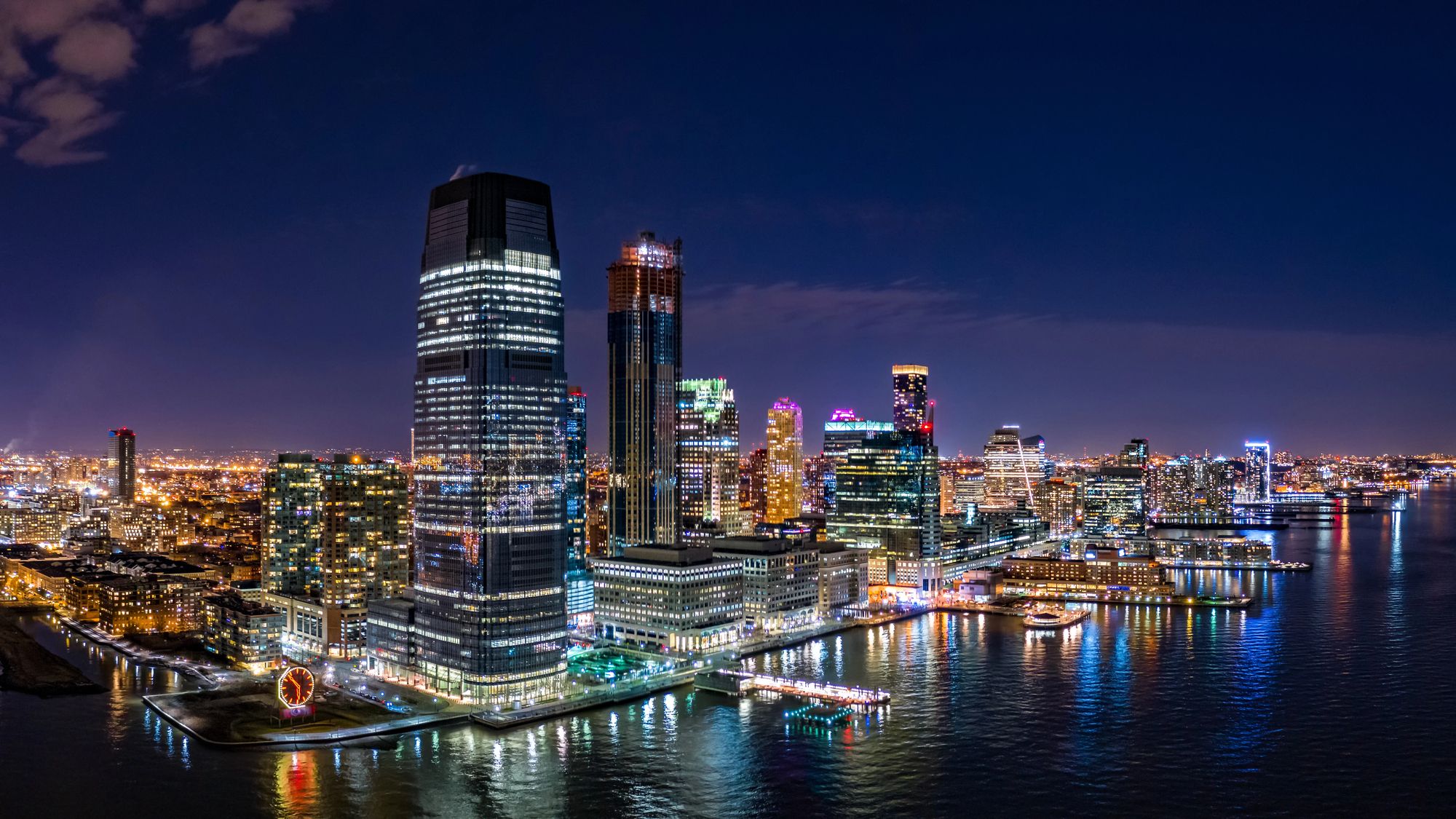Jersey City sits right across the Hudson River from Manhattan, making it a great base for New York City adventures. As New Jersey’s second-largest city after Newark, it’s got killer views, diverse neighborhoods, and a bunch of its own attractions. Jersey City mixes urban energy with surprising green spaces like Liberty State Park, so you get the best of both worlds without NYC’s constant crowds.
The city’s population is one of the most international in the country—honestly, only New York City beats it. You’ll stumble onto amazing food from everywhere, quirky cultural events, and locals who seem genuinely proud of how much the city’s changed. The waterfront’s been totally revamped lately, with new restaurants and shops popping up all the time.
Get a discount of 15% to 70% on accommodation in Jersey City! Look for deals here:
Jersey City Hotels, Apartments, B&Bs
You can check out the Liberty Science Center, do some shopping at Newport Centre, or try your luck at RPM Raceway. Downtown’s got a lively vibe, thanks to a mix of old-school buildings and shiny new amenities. Getting around is easy—hop on the PATH train or a ferry and you’re in Manhattan before you know it. Plus, there’s more space and usually lower prices than if you stayed in NYC itself.
History of Jersey City
Jersey City’s past runs deep, from its Dutch colonial roots to its rise as a major city. Its story follows bigger American patterns—immigration, industry, politics, you name it.
Early Settlements and Pavonia
Back in the 1630s, the area we now call Jersey City was part of New Netherland, a Dutch colony. The Dutch West India Company set up Pavonia on the Hudson’s west bank, but things got tense with the Lenape Native Americans.
In February 1643, conflict exploded during Kieft’s War when Dutch soldiers attacked Lenape camps. This ugly episode, called the Pavonia Massacre, forced people to abandon the settlement for a while.
Eventually, Dutch settlers came back and built farms and trading posts. They liked the spot for its water routes and rich land. Even now, you’ll see nods to this early era in local names and markers around the city.
New Amsterdam and Colonial Times
After New Amsterdam (now NYC) surrendered to the English in 1664, the area became part of New Jersey. Jersey City grew slowly as a farming community at first.
During the American Revolution in 1776, the Battle of Paulus Hook happened here. Major Henry “Light-Horse Harry” Lee led American troops in a successful raid against the British.
The city started to take shape in the early 1800s. In 1804, a group called the Associates of the Jersey Company began developing the waterfront. By 1838, Jersey City was officially incorporated and started growing as its own city.
Growth and Industrialization
The mid-1800s changed everything. The Morris Canal opened in 1836, linking Jersey City to Pennsylvania’s coal country. In 1851, the city expanded by annexing Van Vorst Township.
Big railroad companies like the Erie and Pennsylvania Railroads built major terminals here. These connections turned Jersey City into a huge industrial and shipping hub.
Immigrants poured in—first Irish and German, then Eastern European and Italian. These groups built neighborhoods, churches, and cultural centers that still influence the city’s vibe.
By 1900, over 200,000 people called Jersey City home, and it was known for manufacturing, shipping, and transportation.
Influence of Frank Hague
From 1917 to 1947, Mayor Frank Hague basically ran Jersey City. His Democratic machine controlled city politics and even had sway over state affairs.
Hague kept a tight grip by combining public services with political favors. He built schools, hospitals, and parks, but also made sure his allies got city jobs. People used to say his desk had a special drawer for bribes—who knows if that’s true, but it paints a picture.
Despite the controversy, Hague helped create the Jersey City Medical Center and improved the city’s infrastructure. He once bragged, “I am the law,” which gives you a sense of how much power he had.
Many public buildings from his era still stand, reminders of his long rule over the city.
Geography and Location
Jersey City sits on a peninsula between the Hudson and Hackensack rivers in northeastern New Jersey. The city covers about 15 square miles, with roughly 38 square kilometers of land and 16 square kilometers of water.
Waterfront and Hudson River
The eastern edge runs along the Hudson River, giving you some of the best views of Manhattan anywhere. Over the years, the waterfront has gone from gritty industrial docks to a sleek, modern neighborhood.
Walk along the waterfront and you’ll see shiny skyscrapers, luxury apartments, and public spaces like parks and walkways. Liberty State Park, on the southeastern edge, offers more than 1,200 acres of green space plus views of the Statue of Liberty and Ellis Island.
The Hudson River shapes the city’s identity and economy. Ferries cross the river all the time, so you can get to Manhattan in minutes.
Neighborhoods and Communities
Jersey City is a patchwork of neighborhoods, each with its own personality. The main areas include:
- Downtown: Historic brownstones, trendy food spots, Grove Street
- Journal Square: Cultural hub, more affordable housing
- The Heights: Up high, awesome views
- Bergen-Lafayette: Diverse, with the Victory Hall arts center
- Greenville: Residential, down south
- West Side: Family-friendly, centered around Lincoln Park
These neighborhoods show off the city’s diversity. You’ll find all kinds of communities and a mix of housing, from old brownstones to modern towers.
Bridges and Transportation
Jersey City’s location makes it a real transportation hub. The Holland Tunnel connects right to Manhattan, while the Pulaski Skyway and Bayonne Bridge reach other parts of the region.
Public transit options include:
- The PATH train (with several city stations)
- Hudson-Bergen Light Rail
- NJ Transit buses for local and regional trips
- Ferry service across the Hudson
The city’s spot gives you easy access to NYC and the whole metro area. Lots of people commute to Manhattan, and the trip is usually much quicker than from other suburbs.
Some neighborhoods have a grid of streets, while others twist along the land’s natural shapes. The city keeps adding bike lanes, making it a bit friendlier for cyclists every year.
Culture and Landmarks
Jersey City’s packed with cultural spots and historic landmarks that reflect its wild mix of people and stories. You’ll find waterfront parks with jaw-dropping views, plus museums and libraries that dig into local history.
Liberty State Park and Ellis Island
Liberty State Park gives you 1,200 acres to stretch out in the middle of the city. It’s right on the Hudson, with epic views of Manhattan, the Statue of Liberty, and Ellis Island.
The park’s got walking and bike paths, picnic spots, playgrounds, and even places to fish along the water.
Catch a ferry from the park and you can visit Ellis Island or the Statue of Liberty. Ellis Island processed more than 12 million immigrants between 1892 and 1954, so it’s a pretty powerful place if you’re into history.
The Empty Sky Memorial stands here, honoring New Jersey residents who died on September 11. Two walls line up so you’re looking right where the Twin Towers used to be.
Jersey City Museum
The Jersey City Museum has a solid collection of 19th and 20th-century art and artifacts that show off the city’s cultural diversity. The original museum closed in 2010, but you’ll see its collections pop up in exhibits through partnerships with other groups.
Exhibits often feature work by local artists from all backgrounds, giving you a real sense of the city’s creative side.
Special shows rotate in and out, so there’s usually something new to check out. They tend to focus on themes that matter to Jersey City—its history, its changing neighborhoods, and modern city life.
The museum also runs programs for all ages—workshops, tours, lectures—so you can dig deeper into the art and what it means for the city.
Jersey City Free Public Library
The Jersey City Free Public Library is a big deal for the community, with its main branch and local spots all over town. The main library, built in 1901, has gorgeous Beaux-Arts architecture—worth a visit just to see it.
Inside, you’ll find tons of books, magazines, and digital stuff. There’s a special focus on local history, so the library helps keep Jersey City’s story alive.
Events like author talks, kids’ storytime, and cultural celebrations happen regularly. The library isn’t just for books—it’s a real community hangout.
The New Jersey Room in the main branch has rare documents, photos, and maps that trace the city’s growth. If you’re a history buff, this is the spot to dig into Jersey City’s past.
Parks, Piers, and Scenic Views
Jersey City’s loaded with outdoor spaces where you can relax, get some exercise, or just soak in those unbeatable Manhattan views. The green spaces and waterfront spots are perfect for everything from jogging to taking photos, no matter the season.
Popular Parks and Green Spaces
Hamilton Park is a local favorite, scoring 4.5 stars from visitors. It’s well-kept, with playgrounds, dog runs, and a farmers market that’s a hit with residents.
Lincoln Park is bigger and gets a 4.4-star rating. There are sports fields, paths for walking, and plenty of space for picnics or just lying on the grass.
Liberty State Park is the city’s crown jewel. With the Manhattan skyline, Statue of Liberty, and Ellis Island right there, you won’t forget these views. The park includes:
- Miles of walking and biking trails
- Open lawns for picnics
- The historic Central Railroad Terminal
- Liberty Science Center
Church Square Park and Elysian Park are smaller but just as charming when you need a quick break from city life.
Best Piers and Waterfront Walks
Jersey City’s waterfront puts you right up against the Hudson River, with some seriously stunning piers and walkways. The Hudson River Waterfront Walkway strings together several piers and never really lets up on those Manhattan views.
Pier A Park in Hoboken is worth a detour. It sits along the walkway and hands you some of the best Manhattan views around. The pier juts into the Hudson, so if you’re after a perfect photo spot, this is it.
It’s easy to lose track of time strolling the waterfront. Benches line the path, and plenty of folks bring coffee or lunch just to hang out and watch the boats go by.
Manhattan Skyline and Sunrise Views
Jersey City just might have the best Manhattan skyline views outside Manhattan itself. The waterfront gives you a front-row seat to all that city drama.
If you’re chasing sunrise views, swing by Liberty State Park or the waterfront early. The sun comes up behind Manhattan, and the silhouettes and gold light bouncing off the skyscrapers are wild. Photographers seem to love this spot—can’t really blame them.
Evening views are a whole different vibe once Manhattan lights up. Some top spots:
- Liberty State Park’s waterfront
- Exchange Place waterfront
- J. Owen Grundy Park
- Rooftop bars and restaurants along the waterfront
Every season brings a new look—summer sunsets, winter skylines with holiday lights. Try visiting at different times to see how the light changes everything.
Dining and Coffee Culture
Jersey City’s food and drink scene is buzzing. There’s a wild mix of restaurants, food trucks, and coffee shops—pretty much something for everyone, whether you’re craving international flavors or just need a solid cup of coffee.
Local Restaurants and Cuisines
The city’s restaurant lineup reflects its crazy diversity. You’ll stumble across everything from authentic Indian food to Italian favorites and new American spots. Downtown, especially around Grove Street, is packed with some of the city’s most-loved places to eat.
Lots of restaurants focus on farm-to-table ingredients and fresh Jersey produce. Small, family-run ethnic spots bring real-deal flavors without breaking the bank.
Want dinner with a killer Manhattan view? Check out the restaurants along the Hudson. They’re a bit pricier, but the atmosphere is hard to beat when you want to mark a special night.
Food trucks and outdoor markets add even more to the food scene, especially when the weather’s nice.
Best Coffee Shops
Jersey City’s coffee game has seriously leveled up lately. Drip Coffee & Culture is a go-to, open daily from 7:00 am to 2:00 pm—ideal if you’re on that morning caffeine mission.
If you want your coffee with a view, give Bleu Coffee or Snapdragon Coffee & Social a shot. Both spots get rave reviews from locals and visitors.
Kaffa brews up strong, bold coffee, while Rabble & Lion goes for more nuanced flavors. Cafe Tabarka is another solid pick if you’re wandering around the city.
Gotan Cafe mixes good coffee with tasty food in a chill, urban space. They started out in Tribeca and brought their popular vibe over to Jersey City.
Most of these coffee shops double as neighborhood hangouts—expect friendly baristas and a cozy atmosphere.
Education and Institutions
Jersey City has a bunch of solid educational choices, from public schools to universities. There’s something for just about every stage and interest.
New Jersey City University
New Jersey City University (NJCU) stands out as a key player in higher education here. With 59 undergrad programs and 21 grad degrees, you’ve got a lot to pick from.
NJCU splits into four main colleges: Arts and Sciences, the School of Business, the College of Education, and the College of Professional Studies. So, whether you’re into business or the arts, you’ll find your lane.
If you’re after something advanced, NJCU offers two doctoral programs plus a bunch of certificates for career boosts without a full degree.
The campus feels modern and is set up to help students succeed. The university serves Jersey City’s diverse crowd, so it’s a pretty welcoming place to learn.
Living in Jersey City
Jersey City mixes urban living with diverse neighborhoods and solid amenities. It’s close to NYC, has its own character, and you can still find affordable housing (well, compared to Manhattan).
Residential Areas and Housing
Living here isn’t exactly cheap, but it’s not Manhattan-level expensive either. The cost of living index is about 39.5% above the national average, but higher salaries (around $87,000 a year) help balance it out.
Housing runs the gamut. Downtown’s pricey, but if you head inland, you’ll find more budget-friendly options. Lots of buildings offer crazy good Manhattan views.
The city’s diversity is no joke—people call it one of the most ethnically diverse places in the country. That means amazing food and culture in nearly every neighborhood.
Getting around is easy with PATH trains, ferries, and buses linking to NYC and beyond. Plenty of folks get by without a car thanks to all the transit choices.
Exchange Place and Paulus Hook
Exchange Place hugs the eastern waterfront and serves up some of the city’s best Manhattan views. You’ll see luxury high-rises, corporate offices, and a bunch of upscale perks. The waterfront location makes it a hot spot for finance professionals.
It’s a commuter’s dream—PATH trains get you to the World Trade Center in about four minutes, and ferries run across the Hudson. Residents have waterfront walkways, parks, and outdoor dining with that skyline backdrop.
Just south, Paulus Hook feels a little more chill and residential. Think historic charm—brownstones, cobblestone streets, and a slower pace. Some buildings go back to the 1800s, so there’s real character here.
Even with the city buzz, Paulus Hook keeps a bit of a small-town vibe. There are local shops, restaurants, and Morris Canal Park for river views. It’s popular with families and professionals who want convenience but not the full-on Manhattan rush.
Transportation and Connectivity
Jersey City ranks high for public transit use—almost half the residents commute this way. Its location means you’ve got tons of ways to get to NYC and the rest of New Jersey.
Ferry Access and Services
The ferry system is a scenic, quick way to hop between Jersey City and Manhattan. NY Waterway runs ferries from Paulus Hook, Liberty Harbor, and Port Liberte to different NYC spots. The ride usually takes 10-15 minutes, and the harbor views are pretty unbeatable.
During rush hour, ferries show up every 15-30 minutes. Commuters often pick the ferry over subways, especially when the weather’s good. Tickets run about $7-9 one way, depending on the route.
The ferry terminals in Jersey City link up with local transit, so you can keep moving once you dock.
Public Transit and Roadways
The public transit network here is strong. PATH trains connect Jersey City to Manhattan with stops at Exchange Place, Grove Street, Journal Square, and Newport. Trains run all night, so late-night trips aren’t a problem.
The Hudson-Bergen Light Rail covers north-south routes and links to nearby towns. NJ Transit buses run throughout the city and into neighboring areas.
If you drive, you’ve got the Holland Tunnel to lower Manhattan and the Pulaski Skyway and Turnpike Extension for the rest of New Jersey. The city also offers Via, an on-demand rideshare that helps fill in transit gaps.
Biking is catching on, too, thanks to more Citi Bike stations popping up around Jersey City. It’s a greener way to get around, and honestly, it’s kind of fun.
Business, Finance, and Economy
Jersey City’s become a real business center with a mix of opportunities. There’s support for everything from startups to big financial institutions.
Securities and Financial Services
Jersey City has turned into a hub for securities and financial services. Its spot right across from Manhattan makes it a smart pick for financial firms that want cheaper office space but easy city access.
The Division of Economic Development helps businesses with permits, licensing, and all the usual paperwork. They’ve got resources for both new entrepreneurs and established companies.
Major financial institutions set up shop here, especially along the waterfront. You’ll find big banks, investment firms, and insurance companies all clustered in the area.
New Jersey City University trains students in finance, prepping them for jobs in management, investment banking, and risk. That keeps a steady flow of talent coming into local businesses.
Hyatt House Jersey City
Hyatt House Jersey City stands out in the growing hospitality scene here. This extended-stay spot welcomes business travelers and tourists—really, anyone who wants a comfortable place to land for a while.
Get a discount of 15% to 70% on accommodation in Jersey City! Look for deals here:
Jersey City Hotels, Apartments, B&Bs
Right in the heart of Jersey City, Hyatt House puts you close to business districts and tons of transportation options. Manhattan? You can get there in minutes if you hop on the PATH train or catch a ferry. Super convenient, honestly.
The suites here feel more like apartments, with actual kitchens—perfect if you’re sticking around for more than a couple nights. That setup kind of sums up Jersey City’s vibe: it’s a destination, sure, but also a smart home base for exploring the whole region.
Hyatt House helps boost the local economy by creating jobs and attracting visitors who spend at nearby restaurants and shops. It’s the kind of place that keeps the city’s energy humming along.

